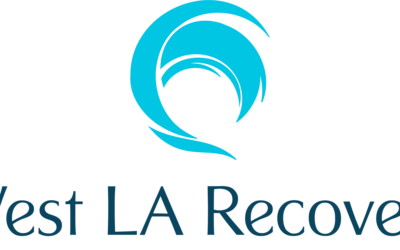Physical Signs of Strengthening in Recovery

Your body sends clear signals when you’re making progress in recovery. Physical changes often emerge as your system begins to heal and restore its natural balance.
Key Physical Indicators:
- Metabolic Changes: You might notice increased body heat or night sweats. These symptoms signal your metabolism ramping up to a healthier state.
- Restored Body Functions: Your body starts returning to its natural rhythms. Women often experience regular menstrual cycles, while both men and women notice improved libido.
- Digestive Health: Your appetite becomes more regulated. You recognize genuine hunger cues and experience better digestion.
- Physical Appearance: Your skin gains a healthier glow, nails become stronger, and hair appears shinier and fuller.
- Sleep Patterns: You’ll find yourself sleeping more soundly through the night. This improved rest translates into sustained energy levels throughout your day.
These physical changes serve as tangible proof of your recovery progress. Each improvement, no matter how small, represents another step toward lasting health and wellness.
Nutritional and Immune System Improvements
Your body’s ability to absorb and use nutrients improves significantly during recovery. Blood tests often show higher levels of vitamin D, B12, and iron – important indicators of nutritional health. These improvements make your immune system stronger, helping you fight off infections and illnesses more effectively.
Benefits for Your Skeletal System
Your skeletal system benefits from better calcium absorption, resulting in stronger bones and teeth. Many people notice fewer dental problems and better bone density scans during their recovery journey.
Positive Changes in Heart Health
Heart health markers also show improvement, with better cholesterol levels and blood pressure readings.
Sign of Recovery Progress: Faster Wound Healing
A remarkable sign of recovery progress is faster healing of wounds. Small cuts and bruises that used to take weeks to heal now resolve much quicker. This healing ability also applies to internal repairs, as your body efficiently rebuilds damaged tissues and strengthens organ systems.
Balanced and Effective Immune Response
Your immune response becomes more balanced and effective:
- Fewer seasonal illnesses
- Reduced inflammation markers
- Better resistance to infections
- Quicker recovery from exercise
- Improved gut health and digestion
Emotional Resilience and Coping Mechanisms
Building emotional strength in recovery means developing a keen awareness of your triggers and learning to navigate them effectively. Major life changes like relocating, switching jobs, or experiencing loss can create significant emotional strain. The key is recognizing these potential triggers before they escalate into crisis points.
Self-awareness becomes your strongest ally in managing relapse risks. You’ll notice subtle shifts in your emotional state:
- Increased irritability or anxiety
- Changes in sleep patterns
- Feelings of isolation or disconnection
- Sudden mood swings
Developing robust coping mechanisms strengthens your recovery foundation:
- Deep breathing exercises during stressful moments
- Mindful walking to process difficult emotions
- Journaling to track emotional patterns
- Regular check-ins with support systems
- Creating healthy boundaries in relationships
Your ability to face challenging situations without turning to substances indicates growing emotional resilience. Each time you successfully navigate a trigger using healthy coping strategies, you reinforce your recovery path and build confidence in your ability to maintain sobriety.
Behavioral Indicators of Progress
Your behavior is a clear sign of how well you’re recovering. One major sign of improvement is when you see less disordered behaviors and negative self-talk. For example, instead of saying “I can’t do this,” you might find yourself saying “I’m learning to handle this.”
Turning Relapses into Learning Opportunities
Instead of feeling ashamed about relapses, you start viewing them as valuable learning experiences. Each setback becomes an opportunity to identify what triggers you, reinforce your boundaries, and improve your recovery plan. This change in mindset shows significant progress in your recovery journey.
Positive Energy Direction
You naturally direct your energy towards activities that are beneficial:
- Pursuing new hobbies
- Building meaningful relationships
- Setting and achieving personal goals
- Engaging in physical exercise
- Practicing creative expression
These positive actions create a strong foundation for lasting sobriety. You’ll notice that you’re participating more in activities that align with your recovery values, replacing old habits with choices that support life. This natural shift in where you focus your energy strengthens your commitment to healing and personal growth.
Additionally, journaling prompts can be a useful tool during this process. They can help you reflect on your progress, understand your emotions better, and set clear goals for the future.
Spiritual Growth and Mindfulness Practices

Spiritual growth in recovery extends beyond religious beliefs – it’s about connecting with your inner self and finding meaning in your journey. Daily meditation practices, even just 5-10 minutes, can strengthen your recovery foundation and build emotional resilience.
Reading recovery-focused literature provides fresh perspectives and practical wisdom. Books like “The Power of Now” or “Recovery: Freedom from Our Addictions” offer valuable insights and tools for your healing journey.
Benefits of Mindfulness-Based Sobriety Practices
Mindfulness-based sobriety practices help you:
- Stay present in challenging moments
- Recognize thought patterns without judgment
- Build awareness of triggers and cravings
- Create space between impulses and actions
How Cognitive Behavioral Therapy (CBT) Enhances Mindfulness Practices
Cognitive Behavioral Therapy (CBT) strengthens these practices by:
- Identifying negative thought patterns
- Developing healthier coping mechanisms
- Restructuring harmful beliefs
- Creating actionable recovery strategies
Regular mindfulness practice combined with CBT creates a powerful toolkit for maintaining sobriety. Many find that incorporating guided meditation apps or attending mindfulness workshops enhances their recovery experience and deepens their spiritual connection.
Measuring Recovery Milestones Effectively
Recovery progress is shown through specific milestones that you can track and celebrate. Improvements in physical health are clear signs – steady weight maintenance, normalized blood pressure, and balanced hormone levels indicate your body’s healing journey.
Key measurable milestones include:
- Consistent sleep patterns
- Regular exercise tolerance
- Stable mood patterns
- Reduced anxiety episodes
- Improved relationships
Setting realistic goals helps maintain momentum without overwhelming pressure. Break down larger recovery objectives into smaller, achievable targets – like maintaining a regular meal schedule for one week or attending three support meetings.
Self-assessment tools provide structure to your progress tracking:
- Daily mood journals
- Recovery apps
- Weekly check-in lists
- Progress photographs
- Symptom tracking sheets
These tools create a visual representation of your growth while keeping expectations manageable. Remember to celebrate small victories – each positive change reinforces your commitment to healing and demonstrates your growing strength in recovery.
Positive Changes in Sobriety Lifestyle
When sobriety becomes your new normal, your body will show it in clear ways. One significant change you’ll notice is in your eating habits – you’ll have regular, satisfying meals without feeling bloated or experiencing sudden weight changes. Your relationship with food will become more balanced and nourishing.
Signs of Positive Changes
Here are some signs that show positive changes in your lifestyle due to sobriety:
- Steady energy levels throughout the day
- Natural sleep-wake cycles without substance interference
- Improved focus and mental clarity at work
- Deeper, more authentic social connections
- Enhanced physical coordination and strength
- Better financial stability through mindful spending
These improvements in your daily life are a direct result of sustained sobriety. They impact every aspect of your routine, from how you feel physically to how you interact with others.
The Importance of Lifestyle Improvements
These lifestyle improvements create a strong foundation for lasting recovery. Each positive change reinforces your commitment to sobriety, making it easier to maintain healthy habits and embrace your evolving identity.
Top Signs of Healing in Sobriety
Physical and emotional strength are powerful signs of healing in sobriety. Your body is repairing itself on a cellular level, becoming more resilient to stress and environmental triggers. You can expect to see this newfound strength in:
- Improved Physical Stamina: Activities that used to be difficult now feel manageable
- Emotional Balance: Fewer mood swings and better control over your emotions
- Clearer Thinking: Better concentration and decision-making skills
Changes in the Brain During Sobriety
The brain’s chemistry goes through significant changes during sobriety. You’ll start to notice fewer cravings and urges, which indicates that your neurotransmitters are rebalancing. This shift allows you to:
- Handle stressful situations without resorting to substances
- Process emotions without feeling overwhelmed
- Make rational decisions when under pressure
Strengthening the Stress Response System
Your body’s response to stress is also adapting and becoming stronger. Situations that used to cause intense anxiety now feel less threatening. This resilience naturally develops as your body and mind heal, laying a solid groundwork for long-term recovery.
The Importance of Reduced Cravings
A significant milestone in your journey is the decrease in cravings. Your brain is rewiring itself, breaking old habits, and forming healthier neural connections. This biological transformation supports your path toward lasting sobriety.
Building Long-Term Stability and Resilience in Recovery
Recovery isn’t a straight line – it’s a journey marked by ups, downs, and steady progress. You’ll notice growing stability through:
- Acceptance of Non-Linear Progress: Each day brings different challenges, but your ability to handle them improves steadily
- Resilient Response to Setbacks: Instead of viewing challenges as failures, you see them as opportunities for growth
- Strong Support Network: Regular engagement with therapy, support groups, and trusted individuals strengthens your recovery foundation
Your path to healing becomes more stable as you build these essential pillars of recovery. When you face difficult moments, your support system provides the strength and guidance needed to maintain progress. Remember – seeking help isn’t a sign of weakness, but a powerful tool for maintaining long-term sobriety.
The skills and resilience you develop through ongoing support create a robust foundation for lasting recovery. Each step forward reinforces your commitment to healing, making you stronger and better equipped to handle life’s challenges while maintaining your sobriety.
It’s important to explore various aspects of recovery such as sober living, which can provide a structured environment conducive to healing. Additionally, understanding the difference between rehab and rehabilitation can be crucial in choosing the right path for your recovery journey. Lastly, maintaining sobriety requires ongoing effort and support, but with the right strategies and mindset, it is entirely achievable.






